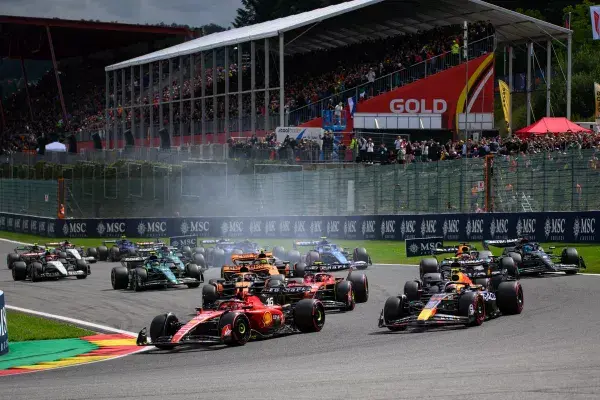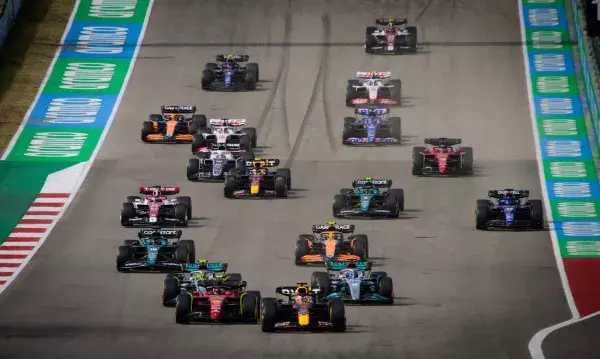24 is the "right number" of races
- mallikarull
- Aug 13, 2023
- 5 min read
Updated: Oct 11, 2023
Ahead of the Silverstone GP, F1 announced their 2024 calendar consisting of 24 races. F1 has seen its growth over recent years thanks to the success of the Netflix docuseries ‘Drive to Survive’, taking F1 from a sport which started with 7 races in 1950 to a series with 24 races and the possibility for more.

image credit: motorsport.com
Many individuals working in the sport have expressed their opinions on the new calendar, while fans also shared their varying views on the new calendar some excited for more racing, and other criticised the sport for its gruelling calendar.
The new calendar would mean the drivers would have a shorter break ahead of the next season, with testing to start February 21st, 2024, and the season Finale to take place on December 8th, 2024.
Mixed feelings in response to the 2024 calendar
Many drivers and team principles have voiced their thoughts on the 2024 calendar, most agreeing that Stefano Domenicali’s “right number” of 24 races is too much.
Aston Martin’s team boss Mike Krack stated "I mean the 24 races is being debated a lot. We have also the double headers, the triple headers. I think all in all, it is probably not far from the limit that we can do, or what we can accept. But I think it is down to the teams to find ways of making this sustainable for their employees.". One of the concerns expressed over the new calendar is the effect on employees such as mechanics and the drivers with the excessive long-haul flights.
Williams team boss James Vowles shared his concerns with the long calendar; "It's an optimization problem. Clearly, we can't just keep throwing the same people at it. We have to rethink almost to a certain extent how we are running racing organizations. But there are racing series that are doing 32 or more weekends a year."
McLaren CEO Zak Brown, appears to be completely for the extensive calendar as the CEO shared with Autosport "I think 24 is the limit. Stefano has kind of said as such. There is a demand for probably 30 Grand Prixs. I think it would be a great way to keep the calendar where it is, but yet still have calendar growth. And the schedule has definitely been improved this year from a logistics point of view,"
Among the Boss’s and CEO’s some drivers have criticised the decision, one notable name being two-time reigning champion Max Verstappen, who stated “I think it is a bit more logical the way it’s planned at least, I guess that’s better for everyone,”, Verstappen presented possible retirement threats as he voiced “More things have to come together for me to make my mind up if I stay longer or not.”. The champion having previously shared his concerns ahead of the intended 24 race calendar in 2023.

image credit: motorsport.com
Another driver to question the 24-race season was Lando Norris who shared his “perfect” number of races and expressed his thoughts saying “I’d say 24 is a lot. If i had to put like a perfect number i would say it’s probably closer to 20”
Issues with the 2024 calendar
Many have scrutinised the calendar and a common issue fan have had with the new calendar is the order of the races in terms of geographical location. a couple issues pointed out is Qatar being at the end of the season away from the other races taking place in the Middle East. Another issue towards the end of the first quatre of the season being round 5 in Japan to Miami before going to Europe for Italy and Monaco, before heading back to North America for the Canadian GP. the lack of geographical structure not working with F1’s plans for sustainability and net zero by 2030 commitment .
Stefano Dominical addressed this by stating that organisers of geographically local races to each other prefer to be separated on the calendar to avoid and reduce competition for tickets. George Russell in a conversation with tennis champion Novak Djokovic revealed that drivers are encouraging F1 organisers to improve the organisation of its calendar.
Another flaw pointed out about the longer season is the lack of variety in races. The calendar remains the same as the 2023 season with the comeback of China and the Emilia Romagna Grand Prix after both raced were forced to be cancelled. Many fans were disappointed to not see a comeback of loved tracks, such as Kyalami in South Africa and Nürburgring in Germany. Many would expect the longer calendar to include old tracks that have been missed by many fans or the inclusion of tracks that are yet to be raced on, such as the new circuit in Vietnam that is yet to have a F1 car race on after its cancellation due to Covid.
Besides the lack of sustainability and new additions from the many unnecessary long-haul flights, another concern has been the pressure and possible burn out from drivers and members of staff. The series have admitted the sports growing schedule is putting a strain on staff, with the structure meaning staff would have to constantly travel long distances on top of having a busy 4-day weekend from media duties on Thursday to race day on Sunday.
F1’s recent growth
The 2022 calendar saw a revenue of $2.573 billion, the sports revenue increasing from 2021, which brought in $2.136 billion. This economic growth can be seen in the growth in weekend attendance by established circuits and new circuits. 2022 saw the addition of the new Miami circuit around the famous Hard Rock stadium, Miami being the first of the two new additions in the US following the success of Drive to Survive in the states. On its debut weekend 242,955 fans had attended over the weekend, the number increasing to 270,000 on its second Grand Prix in 2023. Rapid growth in weekend attendance has also been seen in already established circuits like Silverstone, where a reported 480,000 had attended in 2023, increasing by 20% from 400,000.





コメント